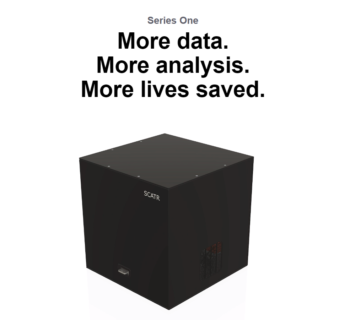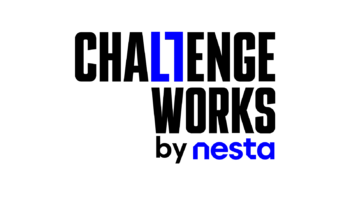News – Blog
Drug Checking Technology Challenge: How can we help new innovators thrive?
1 November 2021
In this blog, co-authored by Impact Canada’s Julie Greene and Challenge Works’ Andrea Richardson, we discuss the ‘unusual suspects’ the Government of Canada’s Impact Canada and Challenge Works have worked with in their respective challenge prize programs.
On March 8, 2021, the Government of Canada’s Drug Checking Technology Challenge (DCTC) planning team gathered for (one of many) virtual meetings a year into the Covid-19 pandemic. But this highly-anticipated call was different; our DCTC team was about to change the fortunes for one company, and perhaps the lives of countless other individuals.
The Drug Checking Technology Challenge was launched by the Canadian Government to improve drug checking technology, allowing the community of people who use drugs and those who support them to make more informed decisions based on the composition of a drug to reduce harm. Joining us on the call, and still unbeknown to them, were the $1,000,000 grand prize winners of the challenge, Alexander Boukin and Ari Forman, inventors of the Scatr Series One. Alex and Ari represent one key element of what challenge prizes aspire to achieve – directing new talent, partners and resources to help solve incredibly complex problems.
Scatr Series One

Alex Boukin and Ari Forman (Ontario) are developing a game-changing device that can accurately and quickly test illegal street drugs for multiple substances, including hard-to-detect fentanyl. With Canada’s opioid crisis worsening and the deadly presence of fentanyl growing, the goal is for all of Canada’s harm-reduction sites to have the easy-to-use, precise and affordable device to help save lives.
Currently sites can use point-and-shoot Raman spectrometers that are limited to collecting just one data point to analyze narcotics; the Scatr Series One, however, collects and classifies hundreds to thousands of spectra in as little as 60 seconds without destroying the sample, making it much more likely substances like fentanyl are detected. The Series One also uses cutting-edge web browser technology, so when a harmful substance appears in one location, other harm reduction sites are alerted.
Never having applied for funding from the Government in the past, and having established their company through partnerships and grants that allowed them to retain full equity, Scatr was drawn to pivot work they were completing on a blood-typing device to align with the important need highlighted by the Drug Checking Technology Challenge. Although they faced stiff and significant competition from academic and other private sector applicants, they were ultimately chosen through a robust assessment process, including a review by experts in the harm reduction field, input from people with lived and living experience, and evaluation by the esteemed DCTC jury. The Scatr Series One device has the greatest potential to be deployed broadly in environments where it is needed, without sacrificing accuracy, sensitivity or the ability to easily use the device, interpret the results and share data.
Having worked on this challenge since 2017, that particular meeting was an exciting and emotional moment, as we watched Alex and Ari listen patiently through the welcomes and introductions with their families gathered nervously behind them on screen. It was hard to keep a poker face, knowing what was coming for this young company. To say it was gratifying to watch their frank joy, actual disbelief and quiet pride would be an understatement. One can only imagine the celebration that took place when we left the call! And then, back to work for Scatr, as the need for their technology is clear and urgent.
Challenge prizes, like the Drug Checking Technology Challenge, can incentivise new and original thinkers like Alexander Boukin and Ari Forman to solve a problem, identifying solutions that may not have been otherwise imagined or considered.
Through the challenge prize method, ‘unusual suspects’ – innovators with a clever idea but little track record, or innovators who often get overlooked by traditional funding programs – are better placed to compete with the incumbents.
This is something Challenge Works has observed in evaluations of past prizes, where teams often report little previous direct experience with prize topics. The Government of Canada also found this to be true in the Drug Checking Technology Challenge: 23 of the 24 initial challenge applicants were new applicants to government funding and the three finalists (including Scatr) were small, startup companies, looking to make a breakthrough in the drug checking technology market.
But how are challenge prizes able to incentivize and support unusual suspects?
-
1. Offering a final prize for solutions and successful outcomes (rather than ideas and plans) allows challenges to support long shots and radical ideas while minimizing financial risk for funders.
And by initially supporting a cohort of semi-finalist and finalist innovators, prizes strengthen and test a whole pipeline of solutions working on a problem in different ways, rather than just one or two ideas.
In the Dynamic Demand Challenge, a prize Challenge Works ran to create innovations that shift electricity demand away from peak periods and onto renewables, finalist Graham Oakes ‘threw together’ the idea for his solution (Upside Energy) in his spare time. While Upside didn’t win the grand prize, five years later it went on to attract almost £10 million in investment, employ 35 staff and work with some of the biggest players in the energy market. In the words of Graham, ‘…the challenge prize did exactly what a challenge prize was supposed to do; it brought someone from outside with some different thinking into the sector’.
-
2. Challenges allow funders to send a signal that previously underserved topics or problems are important and worthy of innovators’ time.
The funding and high profile of challenge prizes directly incentivize innovators to work on these topics, but also indicate to investors and customers that these innovators are addressing serious issues, helping establish new markets.
For example, Impact Canada’s Crush It! Challenge promotes sustainable innovation in the mining sector, transforming how energy is used for crushing and grinding rocks – with a goal to reduce energy consumption and pollution in mining and increase Canadian competitiveness in the sector.
Impact Canada is also working with the Canadian Space Agency (in collaboration with NASA) to launch the Deep Space Food Challenge, to incentivize Canadian innovators to advance food production technologies to support long-duration missions in space and to improve the accessibility of nutritious food across Canada, including the North.
-
3. Barriers to entry for challenge prizes are relatively low compared to other funding sources.
For example, because grant funding is handed out in advance of results to fewer innovators, applications need to be lengthy and detailed. Similarly, raising equity investment can take many months of networking, pitching and due diligence. And recipients of grants, investment and many other more traditional forms of funding are often selected in large part based on prior experience. Contrastingly, entry into a challenge prize typically requires a relatively concise application and ‘team’ or ‘experience’ is often only one of four or more assessment criteria, including tech, impact and innovation. Challenge delivery teams may also directly reach out to and encourage organizations from outside the sector to apply, highlighting this lower barrier to entry.
Challenge Works’ Data Driven Farming Prize was a global challenge to develop innovations that help smallholder farmers in Nepal increase their agricultural productivity. While there is no shortage of established international companies operating in this space (143 teams from 27 countries originally entered the competition), the thirteen teams selected as finalists included seven Nepali teams and six teams new to the agri-business sector.
Similarly, Impact Canada challenges are enabling the Canadian Government to use creative partnership and governance approaches to incentivize innovation within an Indigenous context.Working with an Indigenous steering committee, the Indigenous Homes Innovation Initiative attracted over 300 applications from Indigenous communities and groups to spur new ways to fund, design, build and maintain homes that meet the specific needs of Indigenous communities. Dr. Luugigyoo Patrick Stewart, featured in Canadian Architect magazine (Fall 2019) noted ‘This is a new way of doing business…they’re reaching out. It’s exciting because we’ve never been invited before.’
-
4. Innovators receive funding, non-financial support and credibility throughout the challenge.
While competing for a final prize, innovators receive a small amount of upfront funding and non-financial support which helps them compete with incumbents. Being a part of a prize also gives visibility and a ‘stamp of approval’ to previously little-known teams.
Impact Canada’s Drug Checking Technology Challenge innovators received support from the Government, including technical reviews of their solution, access to world class testing facilities and the ability to present their technologies to the jury and special review committee of those with lived and living experience. For some innovators working outside the substance use or harm reduction space, this was an invaluable opportunity to learn from end users of their technology while in development. Ensuring innovators clearly understood who they were trying to serve was integral to their successful deployment to market.
Challenge Works’ CareerTech Challenge runner-up Would You Rather Be entered the prize with a very early-stage prototype and a novel approach. Through CareerTech, they built connections with other new market entrants and incumbents in their diverse finalist cohort, eventually signing new commercial agreements. CareerTech finalists also received 1-to-1 mentoring to help them navigate the complex and fragmented government procurement landscape for careers support in the UK, prioritize their target audiences and build new relationships with government and schools.
Attracting unusual suspects dates back to the 1714 Longitude Prize, designed to find a solution that accurately measured longitude at sea. While many competitors attempted astronomical solutions, clockmaker John Harrison was convinced (and eventually so was the prize-awarding Board of Longitude) that an accurate portable clock would allow precise navigation by the stars. Whether a 1714 watchmaker or two young inventors from Canada in 2021, challenge prizes can support the fresh thinking needed to tackle today’s increasingly complex problems.
Challenge Works works in partnership with the Government of Canada’s Impact Canada as it co-designs challenges with government departments. Visit challengeworks.org to learn more about Challenge Works and impact.canada.ca to learn more about Impact Canada.
